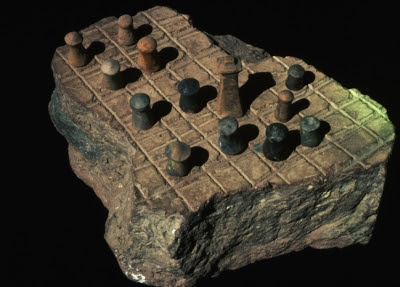 Sometimes it is difficult to gain perspective. That is why it may be difficult to see the forest for the trees. It is as we spend most of our time climbing a mountain: One handhold and foothold at a time. Immediacy and urgency limit our peripheral and forward visions.
Sometimes it is difficult to gain perspective. That is why it may be difficult to see the forest for the trees. It is as we spend most of our time climbing a mountain: One handhold and foothold at a time. Immediacy and urgency limit our peripheral and forward visions.
The end of the first expansion since the Great Financial Crisis may be drawing close. There is a concern among officials and investors that the tools that would be needed to counter a downturn may be compromised by the inability to normalize monetary policy in the upswing and the limited political will to use fiscal policy (see EMU, Japan’s sales tax hike in October and, already large funding needs). Power relations and strategies appear to be in flux. Despite the ongoing US-Chinese trade talks, the antagonism between the two has not really dissipated. The relationship between the US and its traditional allies in Western Europe and Asia seems the most strained in years.
There is a specter haunting us. It is the specter of a new Cold War; a multifaceted and sustained conflict that stops shy of actual direct military engagement and shapes international relations. We have expressed this concern over the last few months and now we more frequent references to this new division. We may look back to this period as when the confrontations crystallized. The first terrain of this new division might be for the fifth generation of cellular technology.
For various reasons, China’s Huawei and ZTE are among the industry equipment leaders in this space. This poses a challenge because of their close ties the Chinese government and corporate espionage and the security risks this entails. To be sure this is not simply a theoretical or potential problem, but patterns of actual behavior and security-related incidents. Next week, Germany is going to auction 5G licenses.
The US has urged countries not to accept Huawei equipment on security grounds or risk being excluding from intel sharing. Germany’s intelligence organization warned that Huawei is not trustworthy. Reports suggest German law makes it difficult to block a particular company. However, the draft requirements including implementation of risk procedures, diversity of equipment, and the like, could be effective barriers to Huawei, but that is yet to be proven. Product specifications are have been used for economic nationalist purposes in the past.
Western Europe is important in this new division. In many respects, like it was in the first Cold War, it may be the key theater in the second Cold War. Eastern and Central Europe are allies in this Cold War. The Czech Republic and Poland have taken much stronger stances than the UK or Germany, for example. The UK says the risks posed by Huawei are manageable.
On the regional level, however, there is greater recognition of the threat posed by the Chinese companies. The European Parliament did not ban Huawei recently as the US may have wished but rather reinforced existing cybersecurity policies. The objective was to minimize the impact of Chinese firms, to get 5G equipment from different vendors or introduce a multi-phase procurement strategy.
In early March, the European Council approved a new framework that goes into effect next month to vet inbound direct investment in critical infrastructure and technologies, include 5G networks. There is no doubt this is aimed primarily at China. Europe does not want to rely on foreign suppliers for new technology, but it has failed to foster regional champions that compete.
It has long been recognized that the center of the world economy that had been the Northern Atlantic for over a century has shifted to the Pacific. Last year, India surpassed France to be the sixth largest economy, and with some conservative assumptions, it will pass the UK this year to move into fifth place. It has an aging population, slow growth, a second generation that arguably might not live as well as the parents.
The US 2020 presidential campaign has already begun. The Democrats are not going to be critical of the Administration’s policy for being too tough on China. There is no constituency for that. After Kennedy and Johnson, Democrats were often accused of being “soft on Communism” which remains a damning epithet in American politics; just look how positions that are associated with social democracy in Europe are getting labeled “socialist” in the US.
The preparation of the populous for a protracted confrontation has already begun. Several steps that seem necessary. The rival (fill in the blank) must be perceived to be a threat and harbor ill-will toward us. China’s Treasury holdings are often portrayed as giving it leverage to drive the US into a recession if it chose, even though it is considerably more complicated, leave alone what it would do to China on the first and second order effects. We are told it could sell dollars, but to really hurt the US import substitution strategy called America First, it would be more harmful to drive the dollar higher, perhaps.
To be sure, it is not just the government. Consider a recent chart in the Wall Street Journal of China’s trade surplus with the US. It is a familiar chart. A line goes from the lower left-hand corner to the upper right-hand corner. The tell was the starting date identified as the Tiananmen Square Massacre. That is totally irrelevant. Can one imagine a chart of the US budget position, beginning with Kent State shooting? The only purpose of the Tiananmen Square reference is to stir up animosity, like Hearst showing babies at the end of Spanish bayonets to fire up opinion ahead of the Spanish-American War.
During the first Cold War, there were often asymmetrical risk perceptions. The US was often more stridently anti-Soviet Union and parts of Western Europe. This produced tensions over the deployment, for example, of theater nuclear weapons in Germany under Reagan. Now, several European countries have joined China’s Asian Infrastructure Investment Bank (AIIB), and Italy is considering supporting the Belt and Road Initiative.
The US and Europe have a number of diverging interests, including the embargo against Iran. The US has also levied tariffs on European steel and aluminum on national security grounds and has threatened to do the same with autos and auto parts. The US and UK have labeled Hezbollah a terrorist organization, but the EU draws a distinction between its political and military arms. The military organization has been recognized as a terrorist organization, but not the political side, which has three ministers in the Western-backed Lebanese government. Reports indicate that the Trump Administration wants its allies to fully fund the cost of local US military bases plus 50% (“cost plus 50). If that is indeed the US plan, it will irk Europe to no end.
Next week’s FOMC meeting, the UK vote, and EU Summit will dominate investors’ attention. The German 5G auction that is on few calendars, and may still be delayed due to legal challenges, is a piece in what looks to be the beginning of a new global division. Western Europe appears to be the key theatre in the second Cold War as it was in the first. The AIIB, the Belt and Road Initiative, and 5G are battles in this war. Trade agreement will also embody this divide too. Recall that NAFTA II prohibits trade agreements with non-market economies (i.e., China), even though the US absorbs the overwhelming majority of Canadian and Mexican exports. It is the precedent that will be included in future agreements.
Full story here Are you the author? Previous post See more for Next postTags: China,Cold War,newsletter,US


















